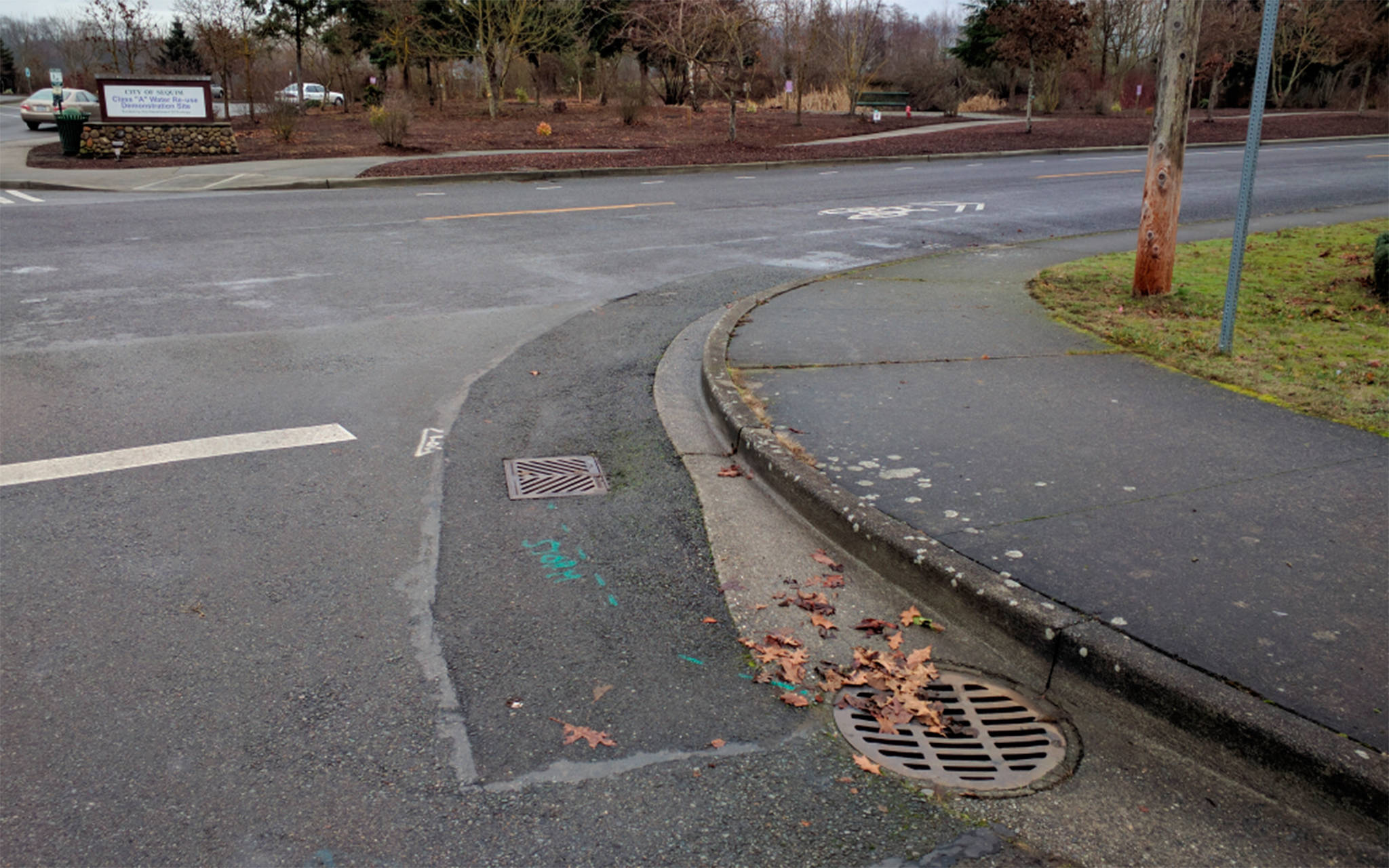New sidewalks and curbs are expected to be installed by the Sequim Lavender Festival this July by Carrie Blake Community Park.
Sequim City Councilors gave unanimous approval on Feb. 26 to enter into a contract with InterWest Construction, Inc. of Sequim to begin construction along North Blake Avenue beginning in early April to finish incomplete stretches of sidewalk and install curbs compliant with the Americans with Disabilities Act. City staff said construction will run concurrently with construction of pickleball courts in the park, which InterWest is also working on.
City Engineer Matt Klontz said on Feb. 26 that InterWest was the lowest of six bids at $217,000, which was about $32,000 lower than the city’s initial estimate. Monies for the project come from the city’s Transportation Benefit District fund this year and rolling over from last year.
Klontz said city staff plan to be “done well in advance” of the Lavender Festival, which moved to the park this summer in preparation for construction along Fir Street. However, road construction was delayed into 2019, but festival organizers said enough planning was in place to keep the site at Carrie Blake Community Park.
The bid came in lower than others, Klontz said, because InterWest is able to do its own concrete work because it’s a local company whereas out-of-area contractors may have to hire a subcontractor for concrete installation.
New curbs and sidewalks will be installed/repaired along North Blake Avenue’s sidewalks from East Washington Street to East Oak Street. City staff previously said all but one corner of the dozen intersections is ADA compliant.
Klontz said the curbs will also be more flat and wider for accessibility and include stainless steel warning plates, which will likely be included in costs for the project’s 10 percent contingency that city councilors also approved with the contract.
Following the Feb. 12 city council meeting, councilors approved adding a six foot bike lane on the west side of North Blake Avenue from Carrie Blake Community Park’s entrance to Washington Street.
City staff plan to paint new crossings and install new signage for accessing the park once the curbs and sidewalks are finished too.
Rainy Day Fund
Planning for a possible recession and/or natural disaster, Sequim city councilors voted 5-2 on Monday, with Pam Leonard-Ray and Brandon Janisse against, adopting an ordinance to create a Rainy Day Fund. City councilors will determine at a later date how much will go into it.
City Manager Charlie Bush said financial experts estimate the next economic recession could begin within the next year to sometime in 2021 and that when a city is in better economic times, it’s best to save for tougher times.
“We’re getting ready for whatever is coming down the road next including disasters,” Bush said.
Sue Hagener, Sequim director of administrative services, said the Rainy Day Fund would run in accordance with a Contingency Fund made in 1993 that can’t exceed $0.375 per $1,000 of the city’s assessed value, or about about $365,000.
The new fund doesn’t have a cap like the Contingency Fund but both require city councilors to vote to add or remove funds.
Hagener said the city’s General Fund’s balance is almost at maximum per policy following a strong year from developer fees and sales taxes in 2017 so they’ll recommend at a later date $200,000-$400,000 be moved to the Rainy Day Fund and about $365,000 moved to the Contingency Fund.
Councilor Ted Miller said it didn’t make sense to have both funds, but Hagener said she’d look into possibilities and ramifications of deleting the Contingency Fund. She said staff would report on the funds quarterly to city councilors.
Leonard-Ray told city staff she liked the concept of saving but said it bothered her to raise water and sewer utilities while saving money for unknowns. She asked if general funds could offset water and sewer infrastructure costs so that utilities wouldn’t go up for residents.
Hagener said the transfer of funds for the Rainy Day Fund would come from general taxes and not water and sewer payments.
“A water and sewer utility need to be able to stand on their own,” she said. “It’s unhealthy for a water and sewer utility to rely on general tax fund tax dollars for the health of that utility.”
Both Hagener and Bush said the Rainy Day Fund could — maintain service levels of street employees and/or police officers in a recession, purchase a piece of property that’s key to the city, offset lost revenues if a large retailer leaves, allow for more aggressive debt payment such as on the Civic Center’s construction, and/or offset costs in a disaster.
“The city would likely not see any revenue at least until the power is out for six months or more,” Bush said of a serious disaster like the Cascadia Subduction Zone earthquake.
“What it could mean is survival of the city.”
Reach the City of Sequim at www.sequimwa.gov or 360-683-4139.



